November is still considered part of the fall season, but it’s also usually when the weather gets really cold. It’s not uncommon for us to have our first snow this month, and while a few things are still growing in the garden, I’ve mostly stopped tending it. Tomatoes and fresh herbs are on their way out, and most of the focus is on hearty winter squash and tangy citrus fruits. But I promise November and December are not boring or bland food months! They bring bright colors through beets, butternut squash, cranberries, and sweet potatoes.

Welcome to my November Produce Guide! It’s hard to believe we’re so close to the end of the year. You may still see ingredients like corn, tomatoes, and bell peppers at the farmer’s market, but that probably won’t last much longer. The first freeze of the season is happening here tonight and I’ve basically given up tending to the garden at this point, which is always bittersweet.
November focuses a lot on winter squash, citrus and hearty greens. These ingredients are perfect for making cozy cold-weather meals that will help fuel you through these days that are consistently getting darker and colder.
PS, remember that different areas of the country have different growing seasons, so what is in season here may not be what is in season where you live.
Below. I’ve highlighted a few of my favorite late fall/early winter produce, and I’ve linked to a few recipes that will give you ideas for how to enjoy them!
NOVEMBER PRODUCE GUIDE
APPLES
As the saying goes, “An apple a day keeps the doctor away,” so you know that apples must have many healthy benefits! Apples are a great source of vitamin C, fiber, and antioxidants. They can also help lower bad cholesterol, which is important for cardiovascular health.
Apples are great because they can be used in both sweet and savory recipes. I love putting them into everything from baked oatmeal and muffins to salads and stuffing. They add a nice refreshing sweetness and a crunchy texture when served raw.
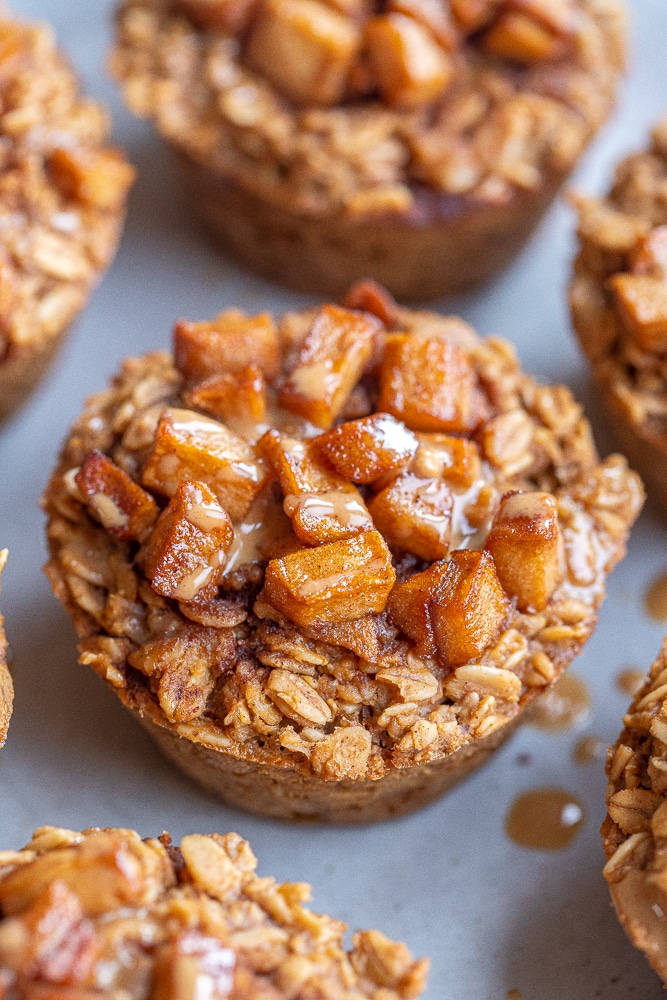
Caramelized Apple and Peanut Butter Baked Oatmeal Cups
Refreshing Kale Salad with Apples
Easy Apple Crisp Breakfast Bowls
BEETS
Beets are root vegetables that come in several different colors. Most people are familiar with red beets, which have a very vibrant color, but there are also golden beets, which are a little more mild in flavor. You can also eat the beet greens!
Beets are high in phytonutrients, which are nutrients found in certain foods that can help keep your body healthy and prevent disease. They’re also high in antioxidants, which have anti-inflammatory properties. Excess inflammation inside the body can lead to auto-immune issues and other diseases.
Beets can be enjoyed raw or cooked. I like to add them raw to salads, like the one below. They can also be pickled, steamed, or roasted. They have an earthy flavor that is slightly sweet.

Beet and Carrot Salad with Chickpeas
Goat Cheese Beet and Balsamic Puff Pastry Bites
Vegan Beet Burgers with Brown Rice
Roasted Beet Chickpea and Black Rice Bowls
Healthier Chocolate Cupcakes with Raspberry and Beets
BROCCOLI
Broccoli is a cruciferous vegetable in the mustard family, along with cabbage, Brussels sprouts, and kale. There are a few different varieties of broccoli, but Calabrese is the most common one in the United States and probably the one that most of us use.
Broccoli is a powerhouse vegetable that offers tons of health benefits. It’s packed with tons of antioxidants, which help reduce unwanted inflammation inside the body. Broccoli also contains large amounts of fiber and vitamin C. One cup of broccoli has about as much vitamin C as an orange.
Broccoli can be enjoyed both raw or cooked. I like chopping raw broccoli into bite-sized pieces and adding it to salads. If you prefer your broccoli cooked, you can steam it, roast it or stir fry it.

Chili Garlic Broccoli with Chickpeas
Crunchy Broccoli Salad with Maple Mustard Dressing
Veggie Packed Broccoli Cheddar Soup
Crunchy Baked Broccoli with Spicy Soy Sauce
Cheesy Broccoli Rice Casserole Bites
BRUSSELS SPROUTS
Brussels sprouts are like tiny cabbages growing together on a big stalk. Brussels sprouts have gotten a bad wrap for being steamed and stinky, but they can actually be super delicious when cooked well!
Brussels sprouts can be served raw or cooked. I like to thinly grate raw sprouts and add them to salads and slaws. They are also great roasted or sautéed. Of course, you can steam them, but I recommend not over-steaming and seasoning with at least salt and pepper.
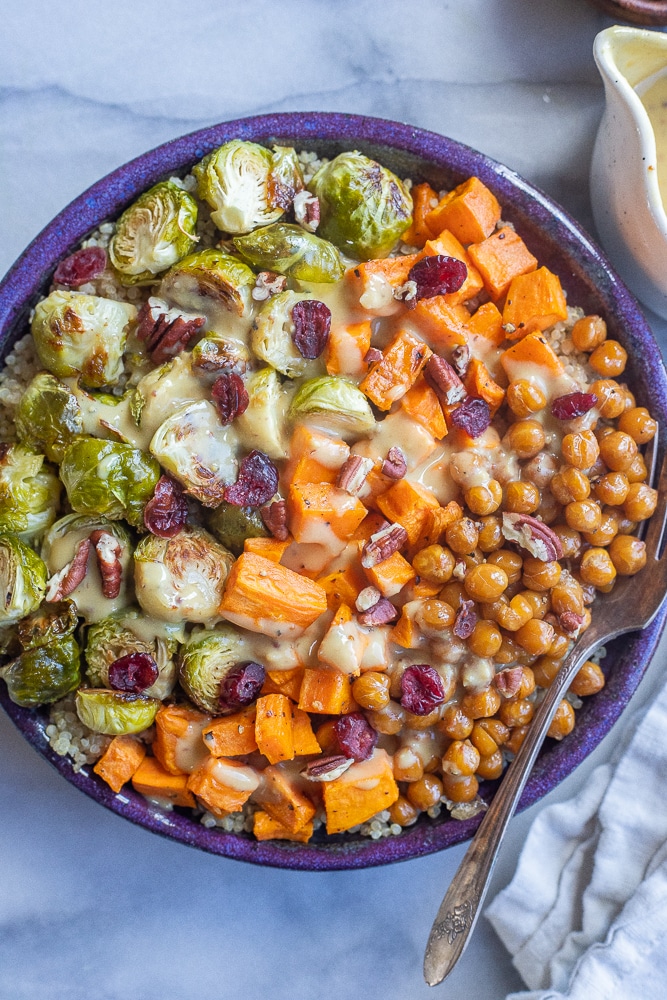
Roasted Brussels Sprout Bowls with Honey Mustard Dressing
Lemon Pepper Roasted Brussels Sprouts
Easy Roasted Vegetable Pasta with Parmesan
CARROTS
Carrots are springtime root vegetables that are pretty easy to grow. Orange carrots are most commonly seen and sold at the grocery store, but you can also grow rainbow-colored carrots. Carrots come in different sizes; some are short and fat, while others are long and thin. Baby carrots, however, are not an actual carrot variety. Instead, they are made with a machine using regular-sized carrots.
I love to snack on raw carrots or add them to salads and wraps. Carrots can also be roasted, sautéed, cooked into soup or baked into cakes or muffins. They’re a very versatile vegetable that can be used in both sweet and savory recipes. In the US, carrots are often eaten raw, with ranch or hummus!
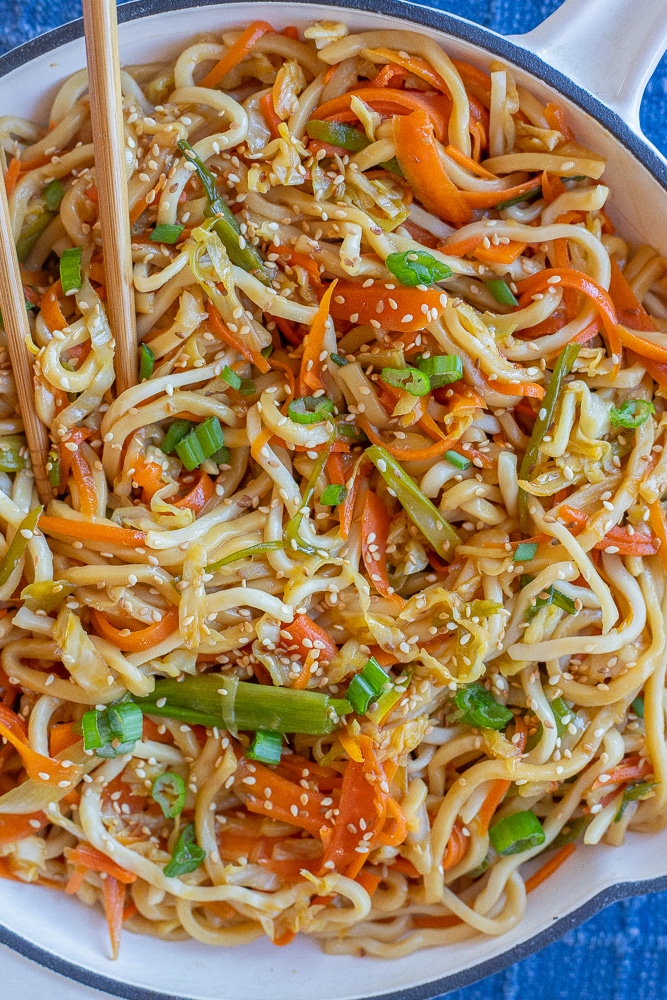
Carrot and Chickpea Salad with Orange Maple Dressing
Roasted Carrot and Dill Hummus
Noodles with Cabbage and Carrots
Curried Sweet Potato Carrot and Red Lentil Soup
CABBAGE
Most Americans likely use green cabbage, but I also use a lot of purple cabbage and Napa cabbage. Cabbage is in the mustard family, along with kale and Brussels sprouts.
Cabbage is commonly enjoyed raw in a coleslaw-like salad. I also love using it raw in other chopped salads, like the one below. Roasting and sautéing cabbage, until it’s caramelized, helps to bring out its natural sweetness and makes for a great vegetable side dish.

Fried Cabbage and Noodles with Tofu
Noodles with Cabbage and Carrots
Halloween Salad with Rice and Veggies
Chickpea Salad with Cucumber and Cabbage
Holiday Salad with Cabbage and Kale
CAULIFLOWER
I use white cauliflower more than any other variety, but you can also find purple and yellow cauliflower. The taste varies slightly, but they can all be used interchangeably in your recipes. I used to see cauliflower as the bland cousin of broccoli, but these days, it’s getting its time in the spotlight, and I’ve really learned to embrace it in the kitchen!
Cauliflower can be cooked in so many different ways. It can be roasted, steamed, charred, pureed, and even turned into rice (a veggie version). My personal favorite way to cook cauliflower, and what is pictured below, is to coat it with batter and a crispy coating, bake it in the oven until crispy, and then toss it in a flavorful sauce.

Golden Roasted Cauliflower with Coconut Curry Tahini Dressing
Buffalo Cauliflower Tacos with Ranch Slaw
Vegetarian Cauliflower Fried Rice
KALE
Kale has several varieties, including curly, lacinato, and purple. It is a hearty green that can withstand colder temperatures. Baby kale has also become quite popular these days. It is still hearty but a little more similar to baby spinach or lettuce.
Kale can be enjoyed both cooked and raw. I love massaging raw kale and adding it to salads. It’s hearty and has some texture while also being refreshing. Kale wilts quickly, so it can easily be thrown into soups, stir-fries, and pasta dishes.

Chopped Kale Power Salad with Lemon Tahini Dressing
Kale and White Bean Pasta with Parmesan
Garlicky Kale with White Beans and Lemon
LEMON
Lemons are citrus fruits that happen to be in season during the winter. I always make sure to have lemons around in the kitchen and add them to everything from salads to soups to pasta. They add a tangy freshness that is great for balancing rich flavors.
I love having lemons around for easy squeezing into water, onto salads, or into sauces. Lemons can be the main flavor of your recipe, and go really well in desserts, or you can use them as a seasoning used to brighten your meals up.
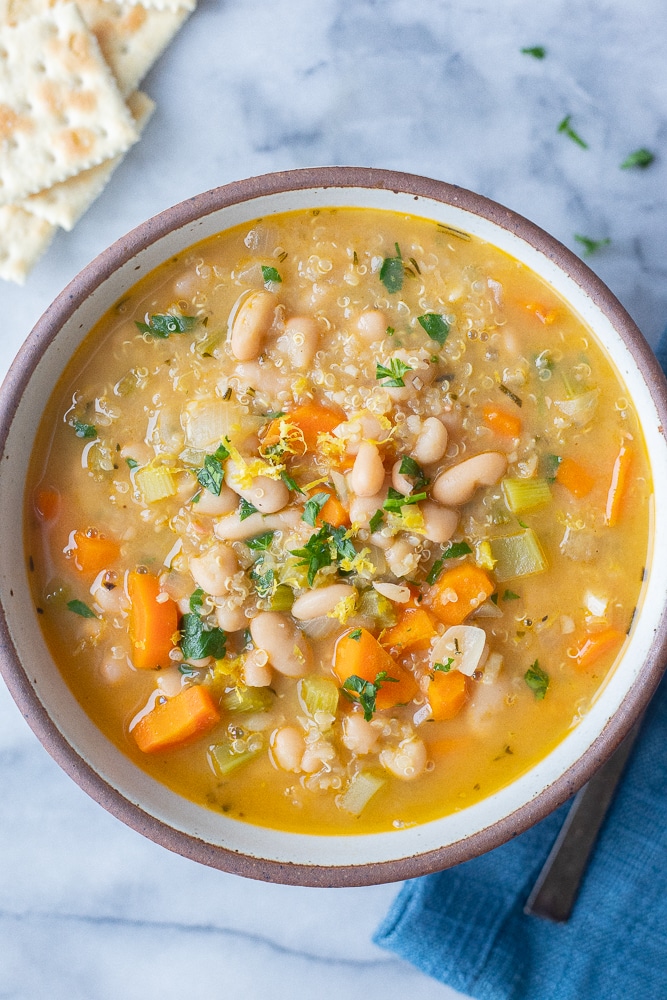
Lemony White Bean Soup with Quinoa
Herby Lemon Jalapeno Pasta with Crispy Chickpea
Lemon Dill Orzo Broccoli Salad
RADISHES
Radishes are in the mustard family and come in a few different varieties. Most people are probably used to seeing Red Radishes, which are commonly sold in grocery stores. These radishes are usually eaten raw and have a spicy, crisp taste.
I usually thinly slice radishes and throw them into salads, but you can also pickle, grill, or roast them in the oven. Roasting them mellows the sharp flavor a bit and adds some sweetness.

Roasted Radishes with Garlic and Herbs
Veggie Sushi Bowls with Quick Pickled Radishes
Crunchy Ranch Salad with Crispy Quinoa
Roasted Sweet Potato Black Bean Salad with Kale
SWEET POTATOES
Sweet potatoes come in several different colors, including orange, red, and purple. They are root vegetables, meaning they grow under the soil and have greens growing above them. The greens are edible, but the actual potato part is more commonly eaten.
My favorite way to cook sweet potatoes is to roast them. I like to dice them into chunks, slice them into French-fry shapes, and toss them with some spices. You can also mash sweet potatoes or bake them like you would a regular potato and add your favorite toppings.
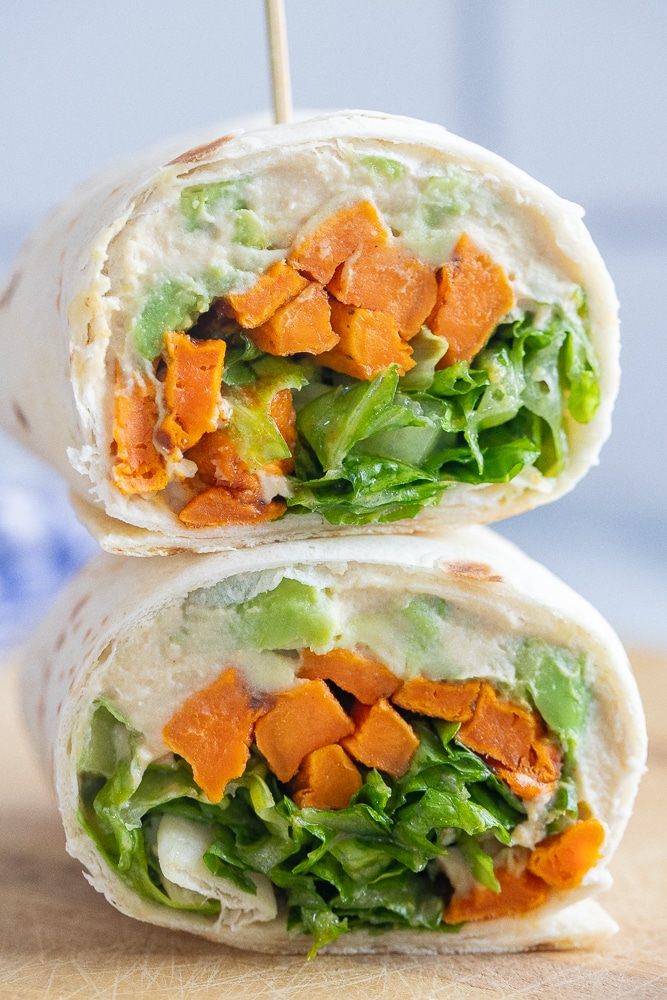
Roasted Sweet Potato Hummus Wraps with Honey Mustard
Sheet Pan Sweet Potato Fajitas with Black Beans
Vegan Sloppy Joe Stuffed Sweet Potatoes
WINTER SQUASH
When I say winter squash, I’m referring to varieties like butternut, acorn, spaghetti, delicata, red kuri, and pumpkin. These hearty squashes grow well in colder temperatures and usually have a long shelf life. Some, like butternut squash, have thick skin that needs to be peeled off, while others, like delicata squash, have skin that can easily be eaten.
In my opinion, winter squash is best enjoyed cooked. I like to roast it and add it to bowls or wraps. Squash is also great in soups, stews, and curries. Spaghetti squash has a great texture and can be used in place of pasta.
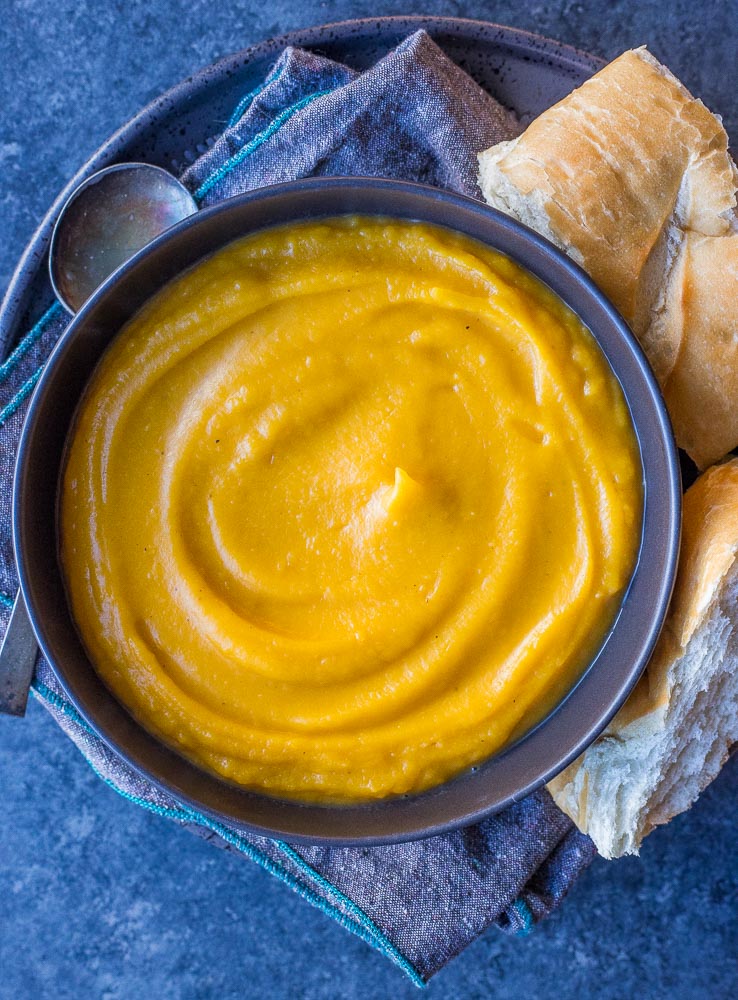
Easy Roasted Butternut Squash Soup

Leave a Reply